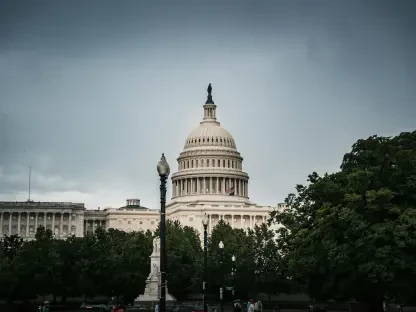The residential mortgage-backed securities (RMBS) market, once a cornerstone of housing finance in the United States, has been eerily quiet on the public front since 2013, with no registered offerings recorded in over a decade. This prolonged dormancy stands in stark contrast to the bustling private-label market and other thriving asset-backed securities (ABS) sectors. Now, the Securities and Exchange Commission (SEC) is stepping in with a bold initiative to breathe life back into this critical segment of the financial ecosystem. Through a recently published concept release, the agency is seeking public input on potential regulatory changes that could remove barriers and encourage the resurgence of public RMBS offerings. This move is seen as a pivotal step toward expanding access to mortgage funding and reducing reliance on singular liquidity sources, ultimately aiming to make homeownership more attainable for many Americans. The following discussion delves into the nuances of this effort, exploring the regulatory landscape and the diverse perspectives surrounding it.
Regulatory Challenges and Opportunities
Unpacking the Impact of Current Rules
The SEC’s inquiry into the stagnant public RMBS market centers on whether existing regulations, particularly the stringent disclosure requirements introduced over a decade ago, are acting as deterrents to issuers. These rules, designed to enhance transparency, mandate detailed reporting on mortgage loan data, which some argue burdens issuers with excessive costs and privacy concerns. The agency is soliciting feedback on revising these disclosure mandates, finding a balance between sharing essential information and protecting sensitive data, and even redefining what constitutes an asset-backed security. SEC Chairman Paul S. Atkins has underscored the vital role of a vibrant public RMBS market in lowering mortgage costs, framing it as a key to supporting the housing sector and the broader American Dream. This initiative reflects a recognition that regulatory frameworks must evolve to meet current market needs while still safeguarding investor trust, a delicate balance that public comments are expected to help shape over the coming months.
Private vs. Public Market Dynamics
A striking disparity exists between the dormant public RMBS market and the active private-label market, which operates primarily through unregistered offerings under Rule 144A. In the past year alone, over $145 billion in privately offered RMBS were issued, while the registered market remained inactive. This contrast is even more pronounced when compared to other ABS markets, such as those backed by auto loans and credit cards, which continue to flourish publicly. SEC Commissioner Mark Uyeda has pointed to this imbalance as evidence that the current regulatory approach may be misaligned, potentially stifling public offerings with overly burdensome requirements. He advocates for a framework that ensures transparency without overwhelming issuers, suggesting that revitalizing public RMBS could benefit lenders, borrowers, and investors by offering diversified fixed-income opportunities. The success of other ABS sectors provides a blueprint, hinting that targeted adjustments could unlock similar potential in the mortgage-backed space.
Diverse Perspectives and Future Pathways
Debating the Root Causes of Stagnation
Not all stakeholders agree on why the public RMBS market has remained inactive for so long, with some questioning whether SEC regulations are the primary culprit. Commissioner Caroline Crenshaw offers a dissenting perspective, suggesting that investor caution and broader market dynamics may play a larger role than regulatory barriers. She points to lingering wariness about the asset class, rooted in its troubled history during past financial crises, as a significant factor. Crenshaw warns against hastily loosening transparency requirements that protect market integrity, urging stakeholders to critically evaluate the assumptions behind the SEC’s concept release. Her concerns highlight the complexity of reviving public RMBS, indicating that any regulatory overhaul must address not just rules but also deep-seated investor sentiment. This perspective adds a layer of caution to the discussion, emphasizing the need for a nuanced approach that considers historical lessons alongside present challenges.
Historical Context and Investor Trust
The RMBS market’s controversial past further complicates the path to revival, as numerous financial institutions have faced substantial penalties—ranging from millions to billions of dollars—for issues related to faulty issuance and mis-selling in previous decades. This history likely fuels the investor hesitancy that Crenshaw references, casting a long shadow over efforts to rebuild confidence in public offerings. The SEC’s initiative must therefore navigate this legacy, ensuring that any regulatory changes prioritize robust protections to prevent past mistakes from recurring. Public feedback, open for 60 days following the concept release’s publication in the Federal Register, will be instrumental in identifying the costs, benefits, and potential burdens of proposed reforms. This input will help shape a framework that not only addresses regulatory barriers but also rebuilds trust among investors, a critical component for sustainable market recovery. The historical baggage underscores the importance of transparency and accountability in any new policies.
Shaping a Balanced Future
Looking back, the SEC’s push to revitalize the public RMBS market through a comprehensive regulatory review marked a significant moment in addressing long-standing challenges in housing finance. The agency’s commitment to inclusivity was evident in its call for public comment, ensuring that diverse voices shaped the decision-making process. Contrasting opinions from Commissioners Uyeda and Crenshaw highlighted the intricate balance between deregulation and investor protection, while the historical penalties tied to RMBS underscored the necessity of maintaining market integrity. Moving forward, stakeholders should focus on submitting detailed, evidence-based feedback to guide the SEC in crafting reforms that lower mortgage costs without compromising safeguards. Additionally, continuous monitoring of market responses to any implemented changes will be essential to refine the approach. This initiative, if informed by broad input, holds the promise to transform the landscape of mortgage-backed securities, paving the way for greater housing access and a more resilient financial system.









